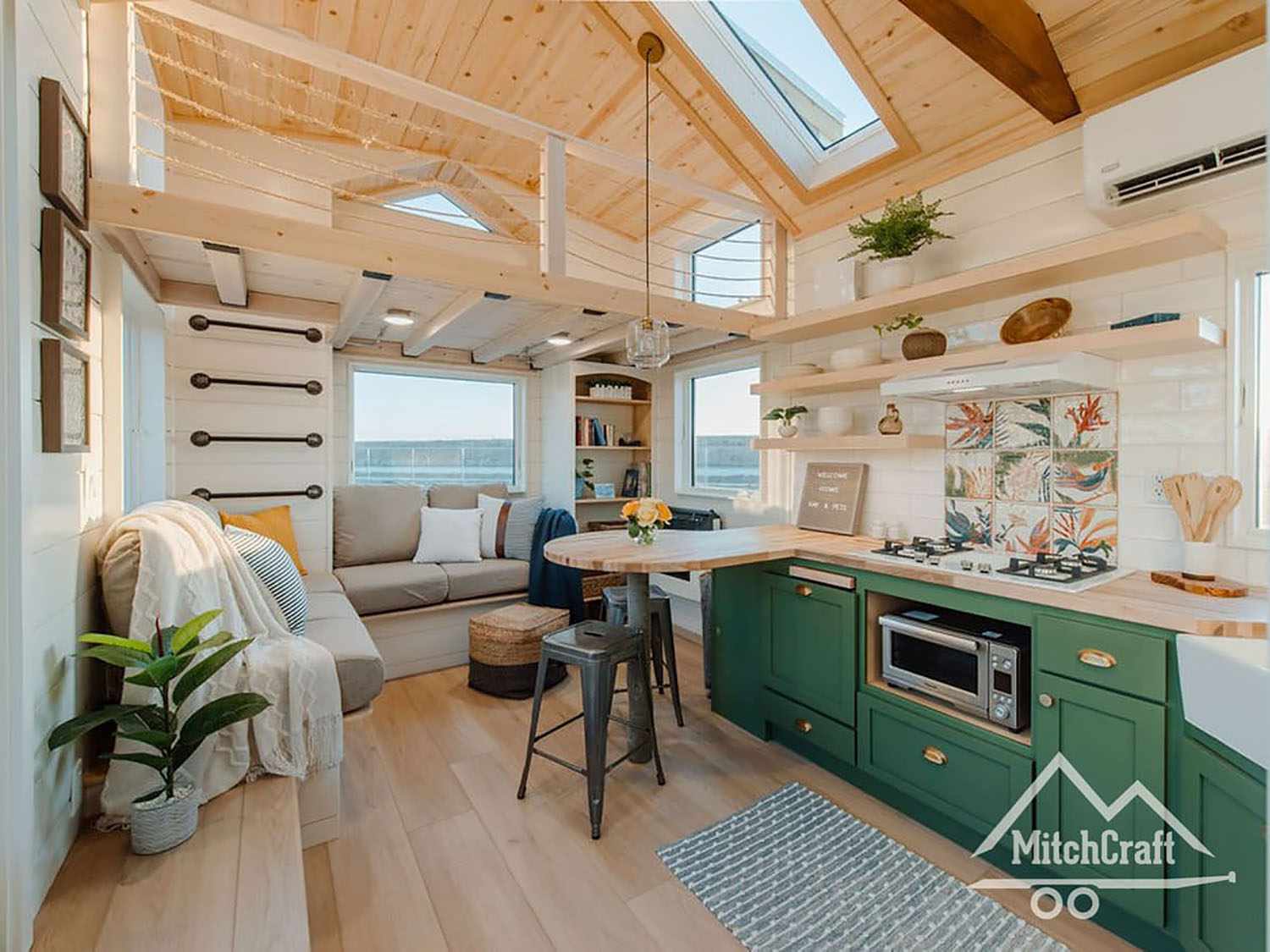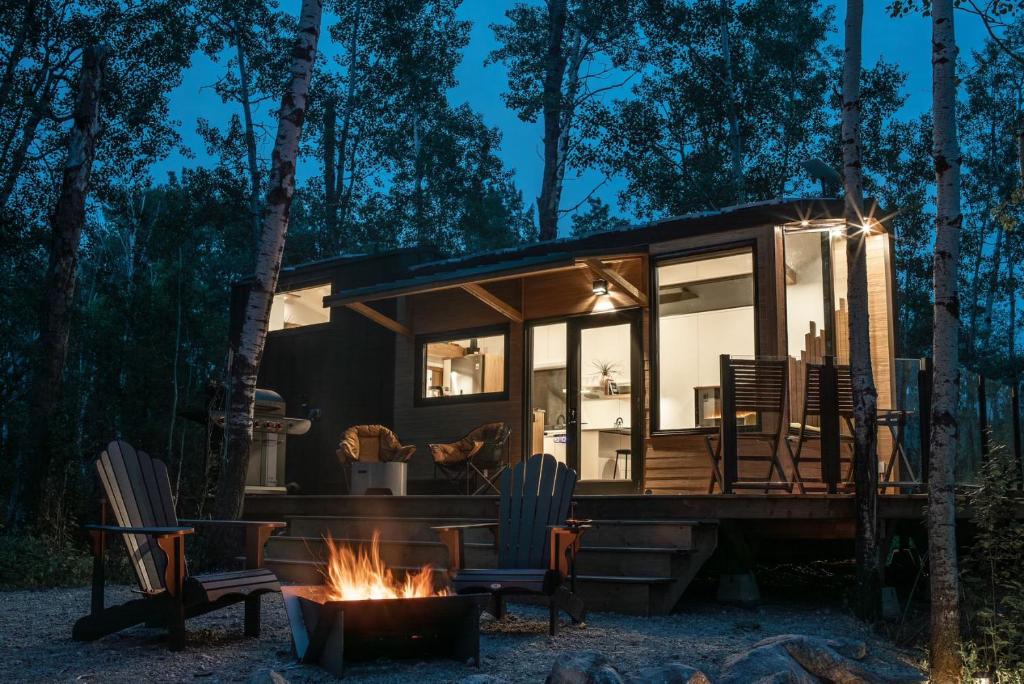In a world where real estate prices soar and new construction homes often fall short of expectations, the allure of designing your own tiny home is growing stronger than ever.
Imagine crafting a space that perfectly embodies your style and needs, without the burden of wasted square footage or cookie-cutter designs.
Here is everything you need to know when designing a tiny house that is not only, functional and practical but most importantly, profitable.
Key Design Considerations
When embarking on your tiny home design journey, it's crucial to consider several key factors that will shape your living space. These considerations will help you create a functional, comfortable, and personalized tiny home that meets your unique needs and preferences.
Foundational Tiny House Knowledge
Before diving into the design process, it's essential to understand the basics of tiny house construction and regulations. This foundational knowledge will help you make informed decisions and avoid potential pitfalls.
Start with a Floor Plan
Designing a tiny home starts with a detailed floor plan that enables visualization and efficient utilization of every square inch of space. Consider the flow and usage of each area, including essential elements like the sleeping area, kitchen, bathroom, and storage, while ensuring flexibility to accommodate changing needs over time as you experiment with different layouts using design software.
Consider Weight
When planning a mobile tiny home design, it's crucial to consider weight by researching the limits of your trailer and towing vehicle, which will impact your material choices. Opt for lightweight options like aluminum framing, and continuously assess your design to ensure you remain within safe weight limits.
Foundation
Choosing the right foundation for your tiny home design is crucial for stability, longevity, and compliance with local regulations. Whether you opt for a concrete slab, pier foundation, or trailer, consider factors like climate and terrain to ensure your tiny home has a stable and durable base.
Local Regulations
In the tiny home design process, navigating local regulations is crucial since zoning laws, building codes, and minimum square footage requirements can heavily influence where you can place your home.
By joining local tiny home communities for insights and reaching out proactively to authorities for regulation clarifications, you can save time and avoid potential legal issues.

Space Optimization
In a tiny home, every inch counts. Optimizing your space is key to creating a comfortable and functional living environment. Let's explore some effective strategies for maximizing the use of your limited square footage.
Vertical Space
In tiny home design, utilizing vertical space is crucial for maximizing storage and living areas without increasing your home's footprint. By considering options like floor-to-ceiling shelving units, loft spaces, and overhead storage solutions, you can creatively optimize every vertical surface for functionality and efficiency.
Multi-Purpose Furniture
In tiny home design, multi-functional furniture is essential as it allows you to efficiently utilize limited space. By incorporating versatile pieces like a dining table that doubles as a work desk or a sofa that converts into a guest bed, you can enjoy all the functionality of a larger home while maintaining a compact and organized environment.
Sliding Doors
Sliding doors are a smart design choice for tiny homes as they offer space-saving benefits without requiring clearance, unlike traditional doors. Additionally, pocket doors that slide into the wall can maximize usable space even more, making them perfect for closets, bathrooms, or separating areas without permanently dividing your tiny home's layout.
Mirrors
Mirrors are a simple yet effective tool in tiny home design, as they create the illusion of depth and make spaces appear larger while also reflecting light to brighten your home. By strategically placing mirrors, such as on walls or as part of furniture, you can enhance spaciousness without overdoing it and turning your tiny home into a hall of mirrors.

Storage
Effective storage solutions are the backbone of successful tiny home living. They allow you to keep your space organized and clutter-free, making your tiny home feel more spacious and comfortable.
Hidden Storage
Hidden storage is an innovative strategy to enhance space in your tiny home design without sacrificing aesthetics or functionality. By thoughtfully integrating storage solutions, such as incorporating drawers into stair steps, utilizing furniture with hidden compartments, or installing trap doors for under-floor storage, you can maintain a seamless and uncluttered look while optimizing every inch of your tiny home.
Declutter
Decluttering is an essential part of tiny home living, and it's about curating a meaningful collection that adds value without creating clutter. By regularly reassessing belongings and adopting a "one in, one out" rule, your tiny home design will benefit from a spacious and peaceful environment where every item earns its keep.
Vertical Shelving
In tiny home design, vertical shelving is an essential tool for maximizing wall space and enhancing storage capacity, with options like floor-to-ceiling, corner, or floating shelves all contributing to a more efficient use of space. Additionally, incorporating shelves above doors and windows offers clever solutions for storing less frequently used items, with heavier items kept lower for safety and lighter ones on higher shelves.
Light and Airiness
Creating a sense of light and airiness is crucial in a tiny home. It can make your space feel larger, more inviting, and more comfortable to live in. Let's explore some strategies to achieve this.
Natural Light
Incorporating large windows or skylights in your tiny home design is one of the most effective ways to maximize natural light, creating a spacious and welcoming environment while maintaining privacy through features like translucent window coverings. Additionally, the strategic placement of windows and a combination of ambient, task, and accent artificial lighting ensure your tiny home remains bright and airy, even after the sun sets.
Light Colors
In tiny home design, the color palette plays a crucial role in creating a spacious and airy atmosphere; therefore, opting for light, neutral colors like white, light gray, or pale pastels for walls and large furniture helps reflect light and make the space feel open. While employing a monochromatic scheme enhances continuity, incorporating darker accents can provide contrast, making lighter areas seem brighter; nonetheless, the most important aspect is choosing colors that resonate with you and ensure comfort in your space.
Open Layouts
An open layout in tiny home design enhances space and airiness by minimizing interior walls, allowing light to freely flow and creating a more spacious feel; however, using furniture, area rugs, or partial walls can effectively define zones without disrupting the open concept. While maintaining an open design is beneficial, incorporating elements like curtains or folding screens offers essential privacy and organization.
Personal Style
While functionality is crucial in tiny home design, it's equally important to infuse your personal style into the space. After all, your tiny home should be a reflection of your personality and taste.
Choose a style
Selecting a cohesive style for your tiny home design is essential for creating a unified look, even in confined spaces. Begin by choosing styles that resonate with you, considering adaptability for tiny living and allowing room for style evolution over time to ensure your home reflects your tastes and needs.
Color Palette
Choosing the right color palette in tiny home design is crucial, as it can significantly impact the feel of your living space. Start with a base of neutral colors for larger elements, and then add 1-2 accent colors through textiles, artwork, or decor, considering a color wheel for harmony so that bold usage enhances rather than overwhelms the tiny home space.
Personal Touches
Adding personal touches to your tiny home design is vital for creating a space that truly reflects your personality and feels like home. By incorporating meaningful items such as family photos or souvenirs, as well as hobbies like a cozy reading nook or creatively displayed instruments, and enhancing with textures like throw pillows, your tiny home design will feel both personal and functional in every corner.







































































































